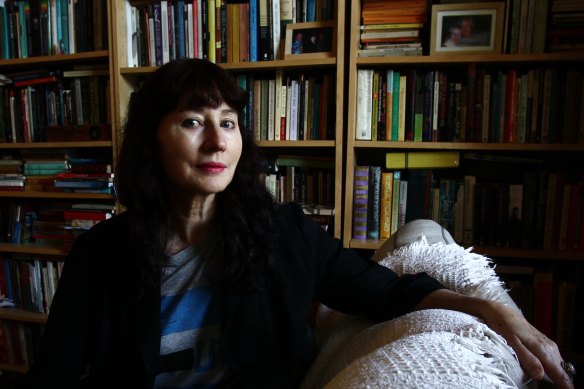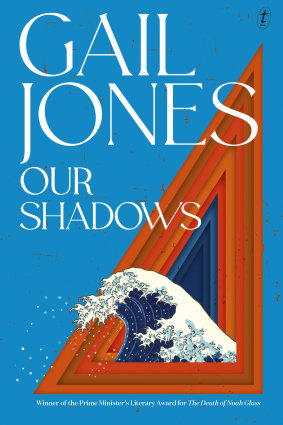- REVIEW
- Culture
- Books
- Literature
This was published 4 years ago
Author Gail Jones mines the past for a sororial sense of the present
By Peter Rose
Siblings abound in novels. Perverse or not, they energise and complicate them. In Australian literature we think of Grace and Caroline Bell in Shirley Hazzard’s The Transit of Venus, or Ralph and Waldo Brown in Patrick White’s The Solid Mandala. Gail Jones, in her previous novel, The Death of Noah Glass, gave us Evie and Martin, who mourn their art historian father. Our Shadows, her latest novel, introduces the equally memorable Nell and Frances. Effectively orphaned as infants, they are pestered by the past, unable to resolve early hurts and frights.

In Our Shadows Gail Jones moves smoothly between characters across three centuries. Credit: Dean Sewell
Mining, including the “hellish” Super Pit in Kalgoorlie, haunts this sensitive novel. The risks – explosive or fibrotic – are huge, and the sisters’ family is scarred by the consequences. (Here, Jones acknowledges the personal histories of her father and grandfather.) The novel opens with an entrapment back in 1907, when Modesto Varischetti (a historical figure) was stuck in an air pocket for nine days. Frances’ lifelong fascination with this drama emerges in a Keatsian preamble: “So who is this girl, dreaming awake, of an entombed miner? What possessed her – who possessed her – to be half in love with death … waiting for the kiss of life?” The best fictional characters are solipsists.
The seam in this mine-like work is deep: there are three levels for three centuries. In some novels this cross-generational device can be formulaic, like a creaky revolve, but not here. Jones moves smoothly between the tale of the young Irishman Paddy Hannan, who treks to Kalgoorlie and finds gold in 1893. Instantly he becomes a legend. Hannan, also historical, is a most sympathetic character, attuned to the greed behind the gold rush and never blind to the misery of Indigenous Australians, those “plundered, hurt people”.
Back in the present, Nell and Frances, long estranged, cope with old sorrows. Nell has never fully recovered from an adolescent breakdown triggered by the first of several acts of pyromania. Frances, newly widowed, feels the pull of sexual recall. There is a funny scene at the art gallery where she works as an attendant. “Every image lost value; every object became null. She should not have chosen a job more antipathetic to her love of visual arts.”
The girls were raised from infancy by their maternal grandparents, Fred and Elsie Kelly. We meet the couple before the war when “Gelignite Fred” falls in love with the sexually precocious Elsie. Fred, who has watched his own miner father die from silicosis, is another wonderful elderly character. His horrific experiences as a POW in wartime Malaya and Japan are adumbrated with delicacy. Now, long after his death, Elsie (or Someone Else) has succumbed to dementia. The “elsewhere of the nursing home” is depicted in a series of poetic interludes.

Credit:
The language is often poetic. Jones reminds us of Virginia Woolf – the same rapt receptivity. Then there are Joycean moments when Elsie dreams of Fred and their waltzing days: “The smell of him yes one two one two.” Jones writes with a suppleness that brings to mind David Malouf – a cool determination (welcome in this age of stubbornly anonymous prose) not to sound like everyone else.
Loss and retrieval are abiding concerns of Gail Jones, as Tanya Dalziell points out in her welcome new monograph, Gail Jones: Word, Image, Ethics (Sydney University Press). It is Nell’s long-suffering husband, Matt, who encourages her to seek the father who relinquished the girls when they were infants. Finally, tentatively, Nell and Frances return to Kalgoorlie.
Here, oddly, the novel loses momentum. Jones reprises the so-familiar saga of the 12 young soccer players who were trapped in a Thai cave. This is apropos of Varischetti of course, but the treatment is journalistic. There is a new character, Val, a Mandildjara woman who knew the sisters' mother and now looks after their rancorous aunt, Enid. Val takes Frances to her Country and introduces her to Aboriginal English. There is a real “concord of spirit”, and Frances is charmed. But here there is a swoony, didactic quality. Even the prose slackens, losing its sinuosity. Val feels convenient, like a functionary.
Frances and Nell – in their stubborn affinities and ancient grievances – are wholly plausible siblings, but Enid and Val seem like improbable companions. We begin to miss the waspish Enid, a seething character who might be at home in Patrick White’s Sarsaparilla. Alone again after this belated odyssey, Frances is restored, with a glimpse of a “frail, provisional faith”.
FICTION: Our Shadows, Gail Jones, Text, $32.99.